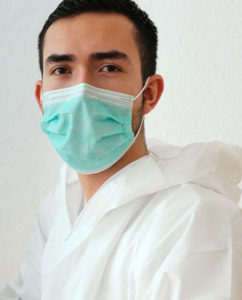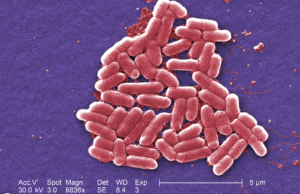
Infectious disease physicians warned Americans to prepare for the worst case scenario this winter –people will be exposed to a surge of multiple dangerous viruses at the same time – SARS-CoV-2 (the cause of COVID-19) and strains of the influenza virus.
“We have to be prepared for the worst-case scenario,” Dr. Leonard Mermel, medical director of the department of epidemiology and infection control at Rhode Island hospital, told reporters at a Sept. 10 briefing hosted by the Infectious Diseases Society of America. “If there was ever a year to get the flu vaccine … and … you could reduce the risk of having these two viruses infect you at the same time or your loved one … this is the year.”
The flu season – which always intensifies during the winter months – is unpredictable. Only about half of Americans usually get the flu shot and in the worst years, the influenza virus can kill as many as 80,000 Americans. In mild years, it kills about 12,000. [See more of why in our AHCJ tip sheet]. Early indications from the southern hemisphere where winter is ending are that the flu season has been mild, which often portends a mild season in the northern hemisphere. Mermel said it is likely the season was mild as result of COVID-19 prevention measures, such as mask wearing, social distancing and good hand hygiene.
But given many Americans’ reluctance to follow COVID-19 prevention measures, infectious disease doctors are uncertain if the U.S. will have as mild a flu season as countries in the southern hemisphere.
“We may not be as vigilant in some areas of the country based on our independence and our American spirit,” he said. “So we have to prepare.”
COVID-19 and the flu, as respiratory illnesses, share similar symptoms – like cough, fever and fatigue – and when people who contract one of these viruses seek care this winter, health providers won’t know which disease someone has. And those sick with the flu could quickly overwhelm health care providers’ resources. In flu seasons of the past, as many as about a half million Americans become so sick from the flu that they need hospitalization.
“We haven’t rounded the corner with COVID-19,” said Dr. Jeanne Marrazzo, director of the division of infectious disease at the University of Alabama at Birmingham during the IDSA briefing. “In Alabama, we remain at about 800-900 range [of hospitalizations] … and there is great concern about college campuses, where students appear to be a huge source of outbreaks … and now we are entering flu season.”
At the moment, there isn’t a widely available diagnostic tool to test for both flu and COVID-19. Three diagnostic tools with that capability were recently approved through emergency use authorization, but it requires a lab that has the technical capacity to conduct genetic testing, Marrazzo said.
She added that it isn’t clear that state laboratories have the supplies to process both COVID and flu tests and that state and local public health authorities have enough staff to adequately support surveillance in this coming flu season.
“It’s a little bit of a house of cards right now,” Marrazzo said. “Despite the energy and effort of public health labs, the capacity is threatened as it has been for years because of public health cuts.”
Marmel is also worried that the flu season leaves Americans even more vulnerable to additional viruses of pandemic potential. In early summer, there were multiple news reports that there is a swine flu, with pandemic potential spreading among pig farmers in China. Though it hasn’t flared into a wider threat, scientists remain concerned.
“This strain has all the attributes that could cause a pandemic,” he said. “Worst case scenario is if this spreads in the fall, when we are worried about COVID.”
For journalists looking for story ideas:
- What are local health officials doing to get people to get a flu shot?
- Where can people in your community get their flu shot this year? Grocery stores? Drug stores? Traveling health providers?
- Many of the traditional places to get flu shots, like the office, aren’t available this year. Where are people comfortable getting flu shots this year? Will they go to a grocery store for a flu shot? Will they go to their doctor’s office?
- What efforts are being made to ensure that people who traditionally don’t have access to health care get a flu shot this year? Do community health centers have the money to get the flu shot too?
- Does your local hospital system have the ability to test for both COVID-19 and the flu?
- What have been the flu vaccination rates in your community in years past?
- What are the current drug treatments for the flu? Are your local pharmacies stocked up with these drugs?
For an AHCJ tip sheet about covering the flu, click here.








